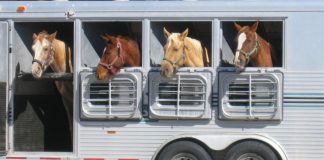If you’ve ever suffered through the process of attempting to diagnose a mystery lameness in your horse, you might be interested in a new system that is being released to veterinarians.
The system aims to provide objective data to assist veterinarians in diagnosis. Typically, vets are limited to using their own judgment based on what they see in a simple flexion test, and in cases of subtle lameness, that can be subjective.
“In some cases with mild lameness, or in cases with multiple limb lameness, even experts looking at the same horse may disagree on whether lameness is present or on its severity,” says Keegan. “An objective method would be helpful to take some guesswork out of the evaluation.”
Learn more about how the system works at www.equinosis.com







This would be a handy little thing to have. Wonder what the cost is.
Cool gadget- I also wonder about the price.
I wonder if this would work on humans. I have a mystery lameness.
It would be cool to have if it really would work.. I wonder what the price would be on it.
Sounds very interesting! I wonder what the cost would be for something like this?
My horse was seriously injured and after a couple years of treatments she was still in a huge amount of pain and both my regular vet and chiropractor were out of ideas. I was referred to another vet who checked her out with the Lameness Locator and determined she literally had problems from pol to tail. Another year of treatments and conditioning and she is a beautiful site to see and ride!
I would try this in a heartbeat. My horse has been lame for about a year after a tendon injury. Her tendon is almost totally healed but she is still lame and we can’t figure out why. I did a search and the closest vet/practitioners is in New Jersey!! Very frustrating . .
Slow motion video analysis is a tool that is very helpful to assess subtle lameness issues in the horse. It is an invaluable tool to a reliably assess and monitor the response to nerve and joint blocks as well as treatment and rehabilitation.